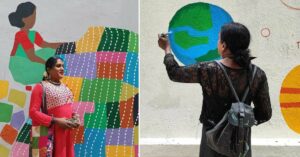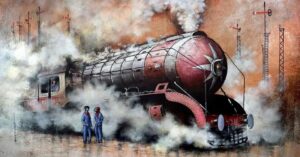TBI Blogs: Meet Kerala’s Only Practising Glove Puppeteer, KC Ramakrishnan
Tracing the history of the Bharatapuzha river that is home to Aandipandaram, the community of traditional glove puppeteers.

Tracing the history of the Bharatapuzha river that is home to Aandipandaram, the community of traditional glove puppeteers.
“We sing and act, giving an impression to the audience that the wooden puppets are, in fact, expressing the emotions we feel,” he said. He then recited the Kathakali padam (the libretto of the classical dance drama of Kerala), explaining details of Sita Apaharanam as well as the legends associated with the famous battle between the Monkey Kings, Bali and Sugriva; incidents that are detailed in the epic, Ramayana.
This was KC Ramakrishnan, the only practising glove puppeteer of our time. Ramakrishnan belongs to the Aandipandaram community of traditional puppeteers and is one of the four remaining puppeteering families in the region.
The first thing that strikes you when you’re interacting with these puppeteers is the calmness and contentment they radiate.
We first met Ramakrishnan several years ago, on our journey to identify people who were a part of what we love to call a unique river valley civilisation; that of the river Bharatapuzha.
A tongue twister for non-Malayalees to pronounce, ‘Bharatapuzha’ is the longest river to pass through the state of Kerala and is called ‘Nila’ by locals.
Originating in the Anaimalai hills of Tamil Nadu, it meanders through the geologically unique Palakkad gap, bringing with it not just a Tamil cultural heritage, but influences of Sufism from Yemen as well as lifestyle and skill sets of people from present Andhra Pradesh and Karnataka. The river carries with it stories, legends, folklore and history (depending on the story teller), all the way from the time of the Mahabharata in Indraprastha to the glorious days of Vikramaditya in Ujjain and to the Pulluvars.
The river basin still showcases the remnants of many tragic wars, expeditions and trade all the way from Greece, China and the deserts of Arabia.
From Aryabhatta, who approximated the value of Pi, to E Sreedharan, the modern day ‘Metro Man,’ many exemplary people are from this region.
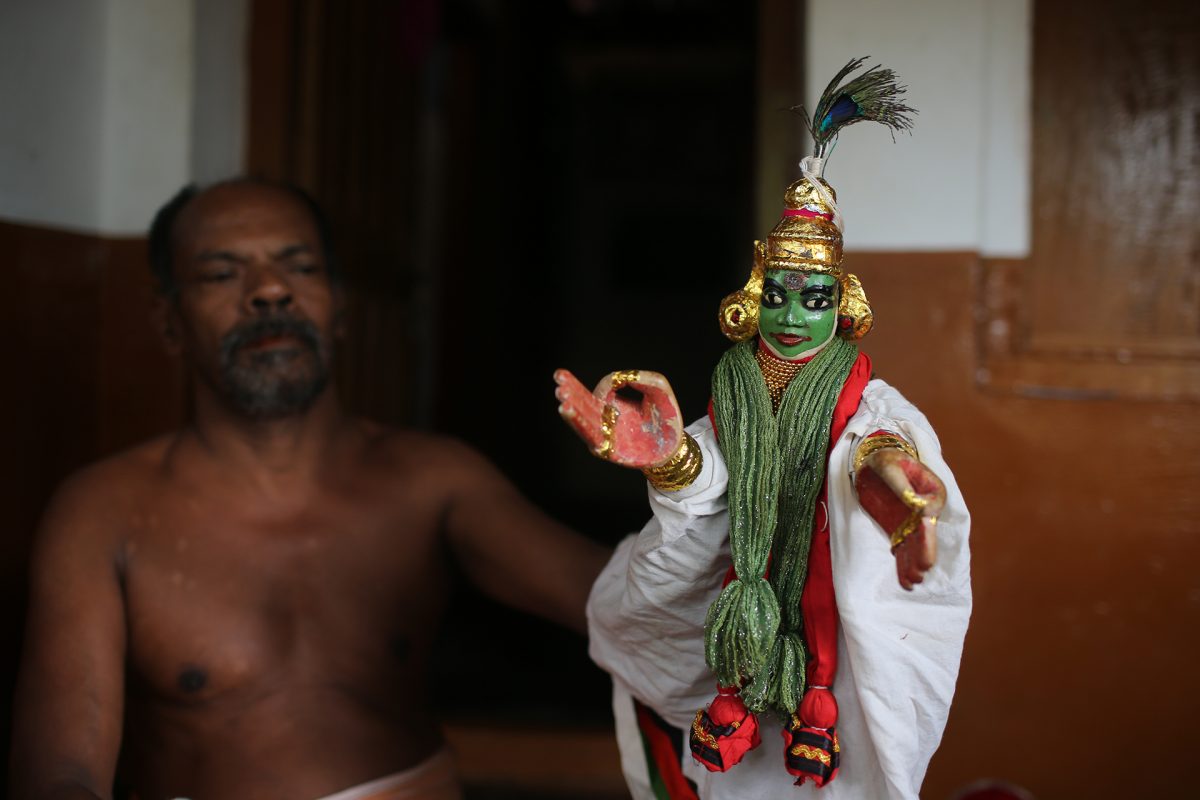
From the Malayalam translation of the Ramayana by Thunchaththu Ezhuthachan in Tirur in the 16th century, to the first in the trilogy of ‘Idris: Keeper of the Light,’ a series by contemporary writer, Anita Nair about a 7 foot trader from Somalia; the quaint village of Mundakkottukurussi on the banks of this river has been home to them all.
To those who listen, the river whispers stories of Agnihotri, who consistently created insecurity amongst the Gods and about the deity of Vayilla Kunnilappan (the Lord who is speechless or the one without a mouth). His stories are still sought out by parents who’s children have speech impairment.
For those with a yearning for nature and the environment, the river has a tributary called Kunti Puzha. It flows through one of the top ten bio-diversity regions of the world: the Silent Valley in the Western Ghats, one of the oldest known mountain regions in the world.
One can still hear Kannada, Telugu, Arabic and Tamil spoken eloquently in the villages and small towns on the banks of the river. Weavers from Mysuru, potters from Renigunta, puppeteers from Karur, warriors from Tulu Nadu and healers from the tribal lands of the east are all part of the fabric that weave Nila’s culture together.
The German speaking missionary Gundert, who compiled the first Malayalam dictionary and brought the printing press to Kerala, had a house in Codacal, facing the river. Remnants of the house are still seen inside the sub-station of Kerala’s Electricity Board.
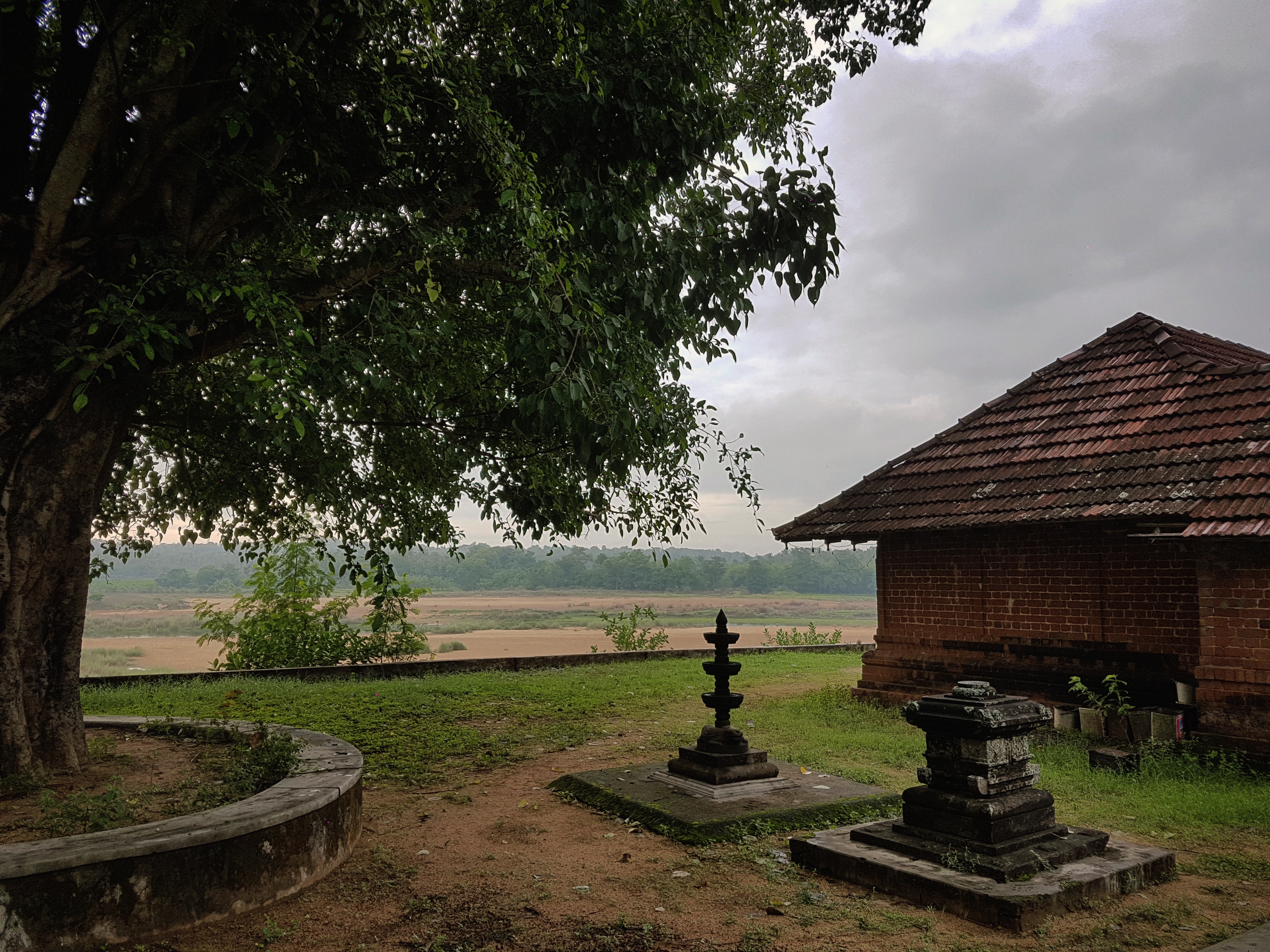
Legends of Aaraan Thampuram are still very much a part of the region’s lore, as is the practice he developed in Ayurveda for elephants: Hasta Ayurveda. The fact that the revered Maharaja of Travancore would prostrate in front of Thampuran, and that the latter was often considered the most important guest during ceremonies of the palace, shows the respect the family commanded.
From the Nambis’ of Alathiyoor, one of the eight traditional healers of this land blessed by the twin Gods of Aswini, to the Muslim Kalaripayattu warriors and medicinal healers of Changampilly who fought for the Zamorin of Kozhikode during the once-in-a-twelve-year coronation for the title of Emperor… these are not merely legends. They are part and parcel of the living heritage of these shores.
It is into this cultural cauldron that Aandipandaaram’s forefathers migrated centuries ago, from present day Andhra Pradesh. They are believed to have travelled by foot and settled on the banks of the shallow river of Bharatapuzha, near the village of Pathiripala. The small, bilingual Aandipandaaram community of Telugu and Malayalam speakers sustained the vanishing traditions of River Nila.
Royal patronage from local rulers, along with gifts from Nair and Namboodiri families were the mainstay of support for most of these families.
As generations passed, the community learned popular local traditions like Kathakali and adopted it to their knowledge system. The result was Paava Kathakali, where stories of Sita Apaharanam from the Ramayan and Kalyaana Soukandikam from the Mahabharatha were enacted using miniature versions of characters, accompanied by actual Kathakali songs and percussions.
The characters are designed as small puppets made out of wood and have ceremonial clothes like life-size Kathakali characters.
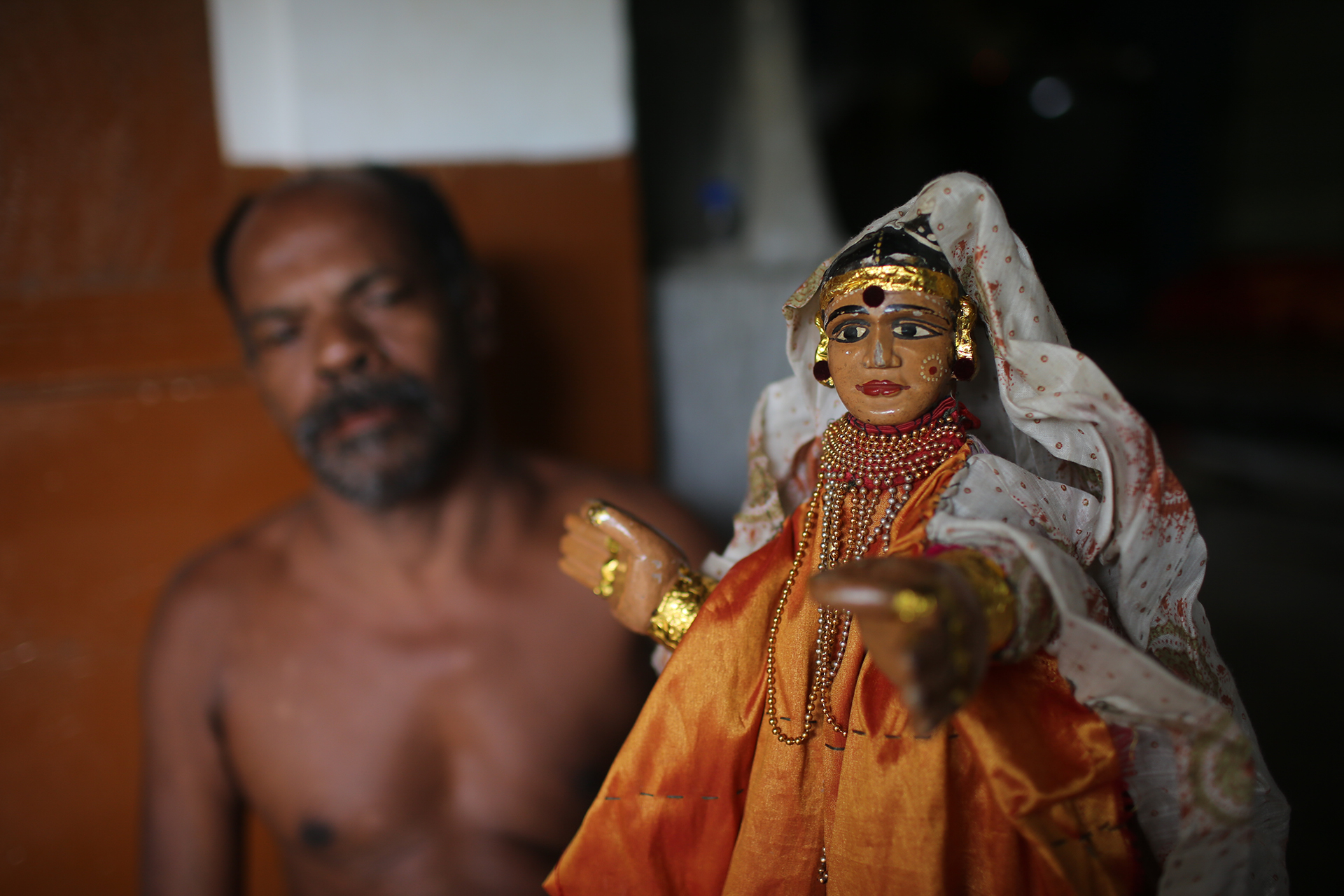
Sitting on the small veranda in front of his house in the middle of the village community, Ramakrishnan talks about the accolades and recognition they have received from cultural organisations abroad and even from the President of India, because of the tradition they pursued.
As is the case with most awards and recognitions, there are negligible monetary benefits to this tradition. This has proved to be one of the main impediments in attracting the younger generation to continue the tradition.
Just before we left his home, Ramakrishnan held me by the hand and sat next to me.
“Son, don’t worry about the things that are going wrong. I know it’s such a stressful time for you, especially the last two years. You haven’t been able to accomplish many things and many of your ideas to support us still remain a dream. Mother is with us, she will guide us. Trust me, in a couple of months, you and I will be celebrating many things together. Go now peacefully. But come home… I will be praying for you,” he said.
Wondering how he sensed what I went through, I stepped out, promising I would come home soon, to be a part of their day-to-day life.
The author is joining travel photographer, Ajay Menon for two weeks from 20 July 2016 onwards to trace Bharatapuzha (Nila) from the mountains to the ocean. Together, they will be assisting a team of ten photography / travel enthusiasts to experience the cultural, natural and social heritage of this unique river valley civilisation.
All photographs courtesy of Ajay Menon.
Like this story? Have something to share? Email: [email protected], or join us on Facebook and Twitter (@thebetterindia). To get positive news on WhatsApp, just send ‘Start’ to 090 2900 3600 via WhatsApp.
This story made me
- 97
- 121
- 89
- 167
Tell Us More
We bring stories straight from the heart of India, to inspire millions and create a wave of impact. Our positive movement is growing bigger everyday, and we would love for you to join it.
Please contribute whatever you can, every little penny helps our team in bringing you more stories that support dreams and spread hope.







